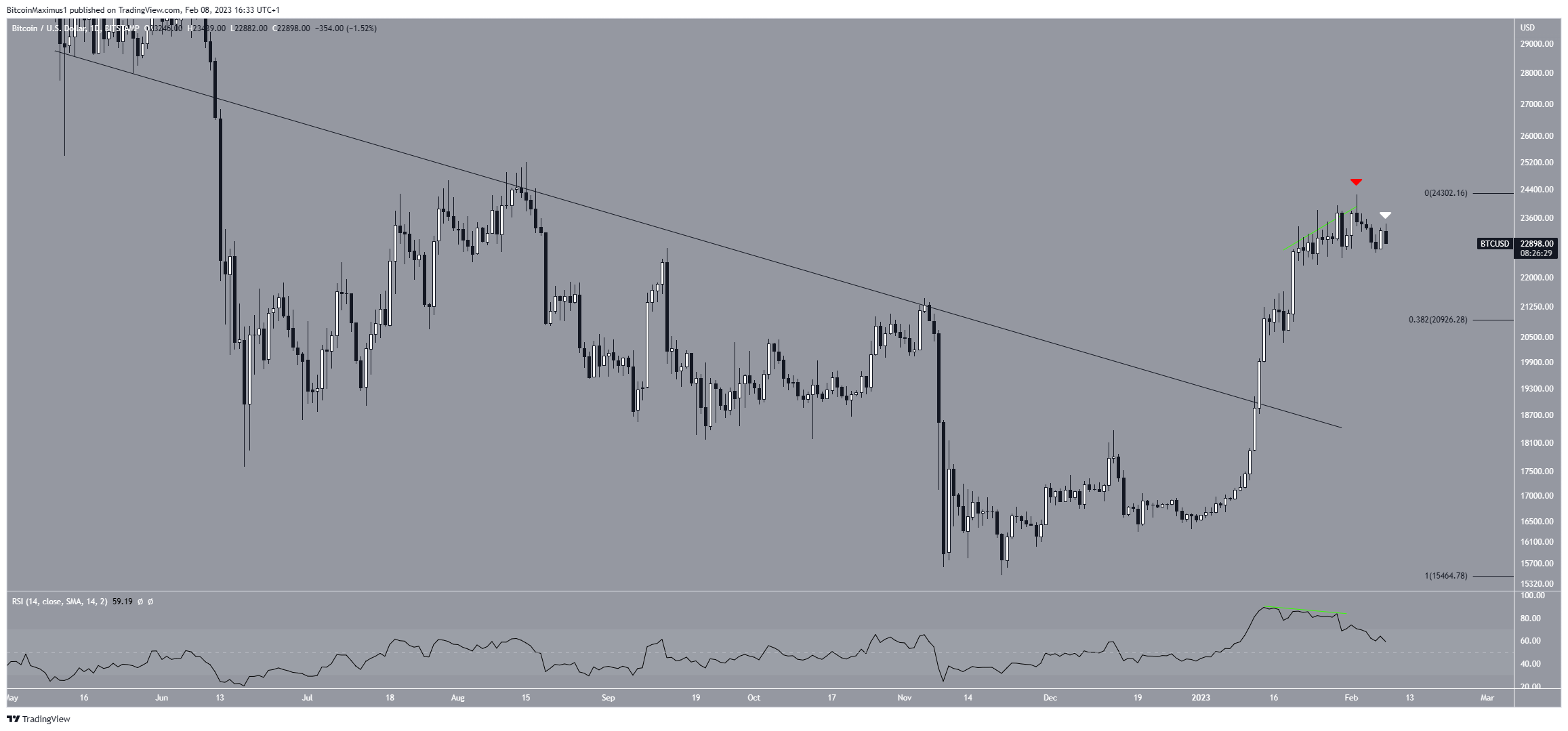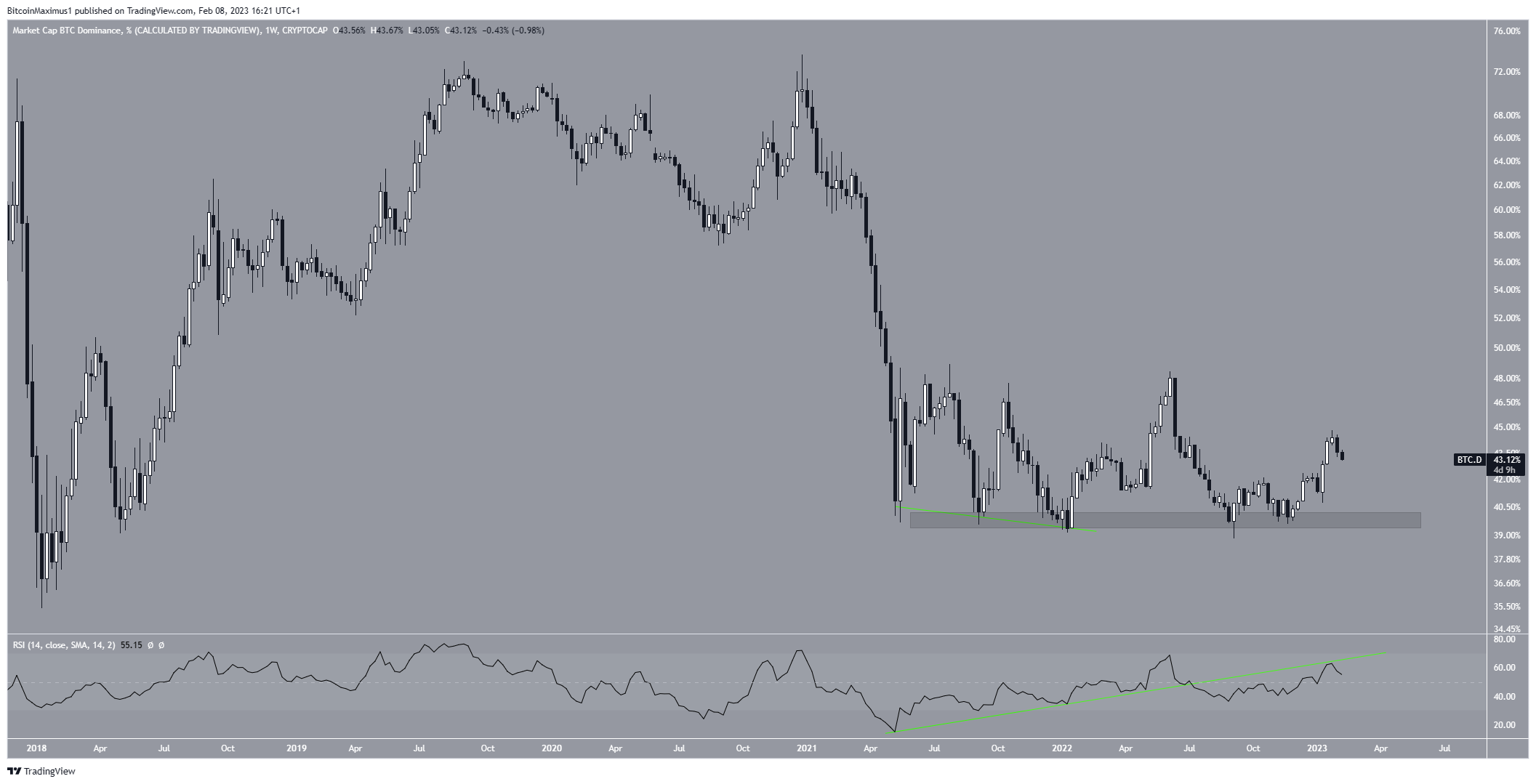The Bitcoin (BTC) Rally Hits Obstacle but Supply Squeeze Could Cause Surge in Price

The Bitcoin (BTC) price shows signs of weakness in the short-term, but the long-term bullish trend remains intact.
An analysis of the different cohorts that hold Bitcoin shows that long-term holders are at a historic peak. Long-term holders are the addresses holding BTC for more than six months.
Currently, 78% of the total BTC supply is owned by long-term holders. Combined with the consistent outflow from exchanges, this could cause a supply squeeze, where the lack of available BTC can cause a bidding war and a surge in price.
In other Bitcoin news, MicroStrategy chairman Michael Saylor stated that he is still bullish on the digital asset and took jibes at other business leaders who are more skeptical. In some negative news, Billionaire investor Tim Draper visited the Central Bank of Sri Lanka in an attempt to promote Bitcoin and the improvement blockchain technology can provide to their financial system. However, he was met with deaf ears.
Bitcoin Price Resumes Ascent
The BTC price has increased at an accelerated rate since the beginning of the year. It broke out from a descending resistance line on Jan. 13 and reached a high of $24,258 on Feb. 2. However, it created a bearish candlestick (red icon) the same day and has fallen since.
Furthermore, the daily RSI has generated bearish divergence (green line) inside the overbought territory. This is a sign that often precedes downward movements.
BTC is currently in the process of creating a bearish engulfing candlestick (white icon). If this occurs, it will confirm the short-term reversal and could lead to a retracement to the 0.382 Fib retracement support level at $20,926.
On the other hand, an increase above the Feb. 2 high of $24,258 would mean that the trend is still bullish and could lead to an upward movement toward $26,000.

BTC/USD Daily Chart. Source: TradingView
Bitcoin Dominance Rate (BTCD) RSI Gives Bearish Signal
The Bitcoin Dominance Rate has increased since Sept. 2022. However, it created a bearish candlestick last week, which could signify things to come.
More importantly, the weekly RSI validated a bullish divergence trend line as resistance (red icon). The bullish divergence trend line catalyzed the current upward movement, and its breakdown and validation as resistance is a significant bearish signal.
Therefore, unless the RSI moved above this line or creates another bullish divergence, a BTCD decrease toward 40% and possibly 35% is expected. An RSI decrease and close below 50 would confirm this bearish forecast.

BTC.D Weekly Chart. Source: TradingView
To conclude, the most likely Bitcoin price forecast is a decrease toward $20,926. Afterward, the upward movement can continue. An increase above the Feb. 3 high of $24,256 would invalidate this short-term bearish outlook and could lead to highs near $26,000.
For BeInCrypto’s latest crypto market analysis, click here.






 Bitcoin
Bitcoin  Ethereum
Ethereum  Tether
Tether  USDC
USDC  TRON
TRON  Dogecoin
Dogecoin  Cardano
Cardano  Bitcoin Cash
Bitcoin Cash  LEO Token
LEO Token  Chainlink
Chainlink  Zcash
Zcash  Monero
Monero  Stellar
Stellar  Litecoin
Litecoin  Hedera
Hedera  Dai
Dai  Cronos
Cronos  OKB
OKB  Tether Gold
Tether Gold  Ethereum Classic
Ethereum Classic  KuCoin
KuCoin  Gate
Gate  Algorand
Algorand  Cosmos Hub
Cosmos Hub  VeChain
VeChain  Dash
Dash  Tezos
Tezos  TrueUSD
TrueUSD  Stacks
Stacks  IOTA
IOTA  Basic Attention
Basic Attention  Decred
Decred  Theta Network
Theta Network  NEO
NEO  Synthetix
Synthetix  Qtum
Qtum  0x Protocol
0x Protocol  Ravencoin
Ravencoin  DigiByte
DigiByte  Nano
Nano  Zilliqa
Zilliqa  Holo
Holo  Siacoin
Siacoin  Numeraire
Numeraire  Waves
Waves  Ontology
Ontology  Enjin Coin
Enjin Coin  BUSD
BUSD  Status
Status  Hive
Hive  Pax Dollar
Pax Dollar  Lisk
Lisk  Steem
Steem  Huobi
Huobi  OMG Network
OMG Network  NEM
NEM  Bitcoin Gold
Bitcoin Gold  Augur
Augur  HUSD
HUSD